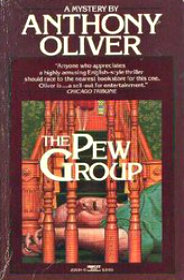The Case of the Dangerous Dowager by Erle Stanley Gardner
Review by Matt B. (BuffaloSavage)
Self-styled “hard bitten old hellion,” Matilda Benson hires lawyer Perry Mason to obtain IOU’s from the operator of a gambling ship, Sam Grieb. The IOU’s were signed by her impetuous granddaughter Sylvia. Her brute of a husband, Frank Oxman, wants the IOU’s to prove that Sylvia can’t manage money or her impulsive gambling so she can’t possibly raise their daughter properly. Matilda wants to scare and thus save Sylvia.
When Mason gets to the floating casino, he finds Matilda Benson on board. He also finds Sylvia in the waiting room of an office where Sam Gieb is slumped behind his desk, dead from a gunshot to his head. There are two witness that have seen a woman throw a handgun thrown overboard. Is Sylvia or her dowager granny a murderer?
This is worth reading because it is a locked room mystery, one of the few in the 70 or so Mason mysteries. Though the number of suspects is small, the reveal is a genuine surprise. This novel was published in the 1930s so Perry Mason plays very fast and loose as an officer of the court. There is no courtroom climax. Instead – surprise! – all but one of the suspects are gathered into a room. Gardner was not usually strong on describing people, places, or atmosphere. But in this he does get in nice atmospherics: the fog, the garish lights, the speed boats plying between shore and gambling ship.









